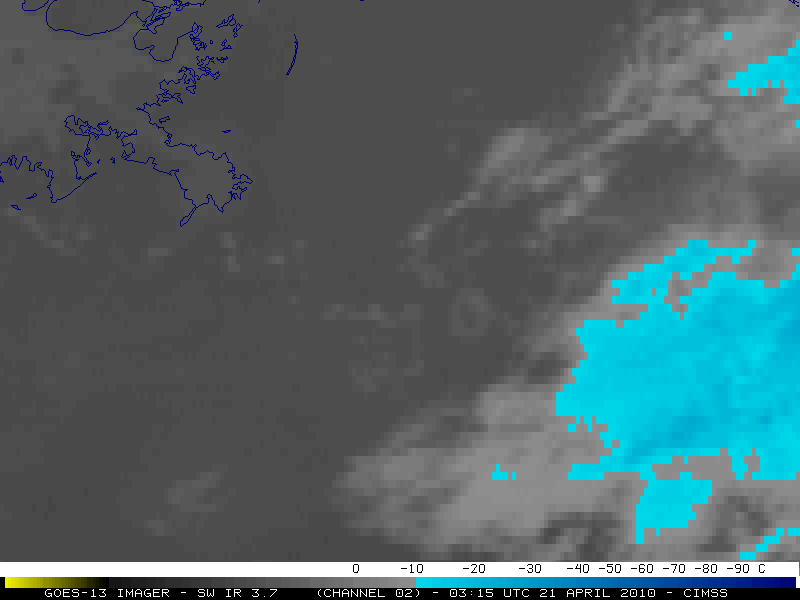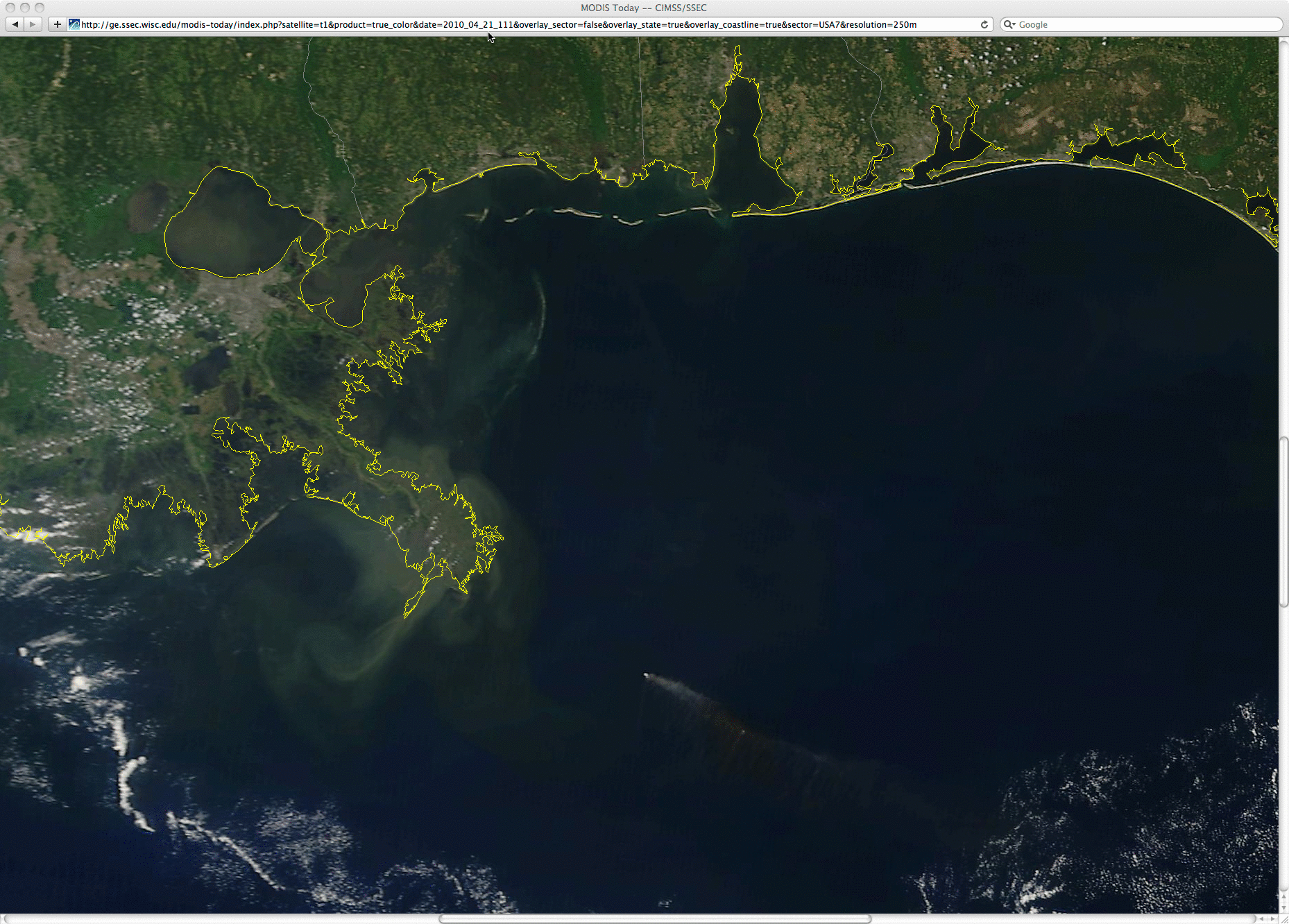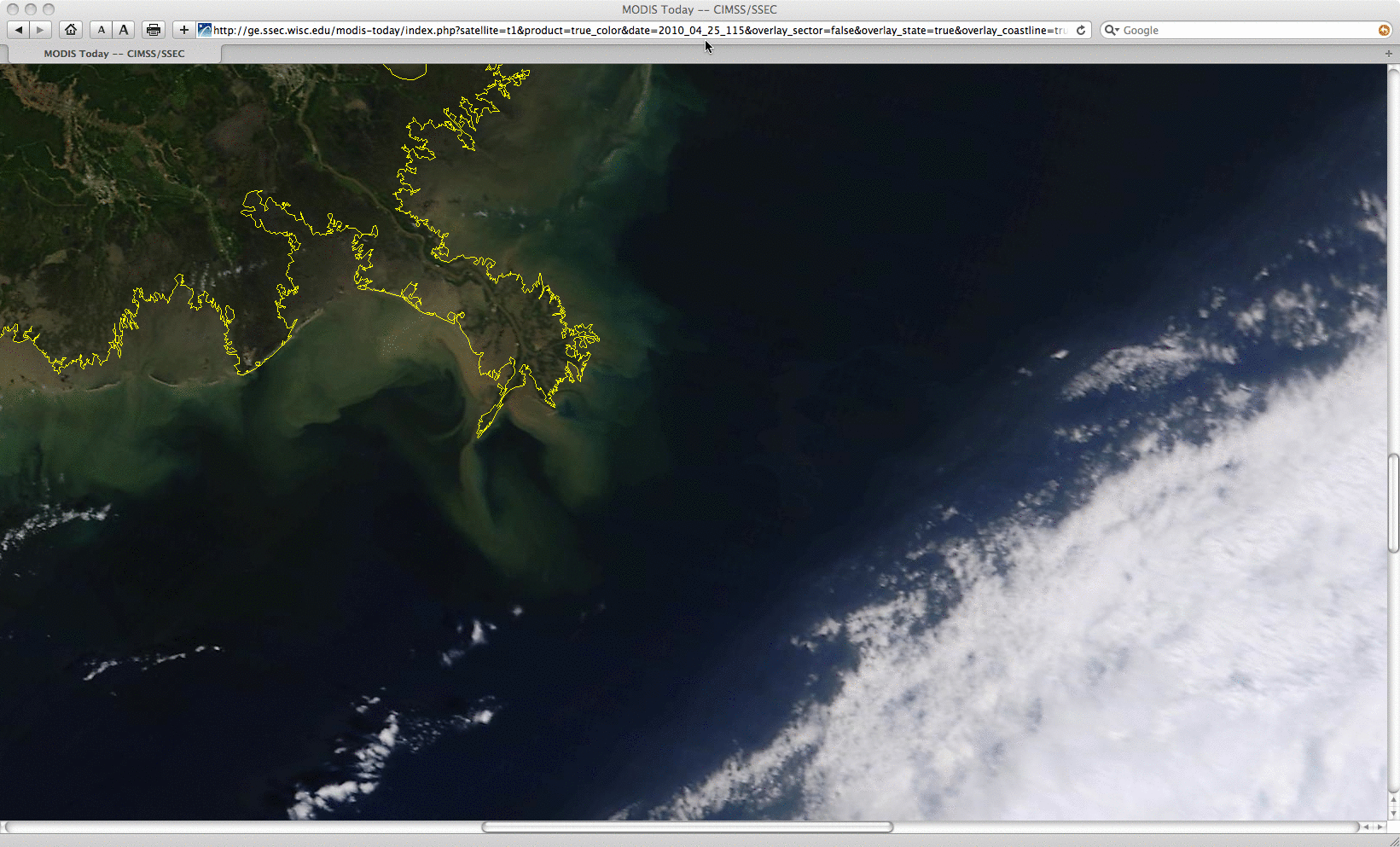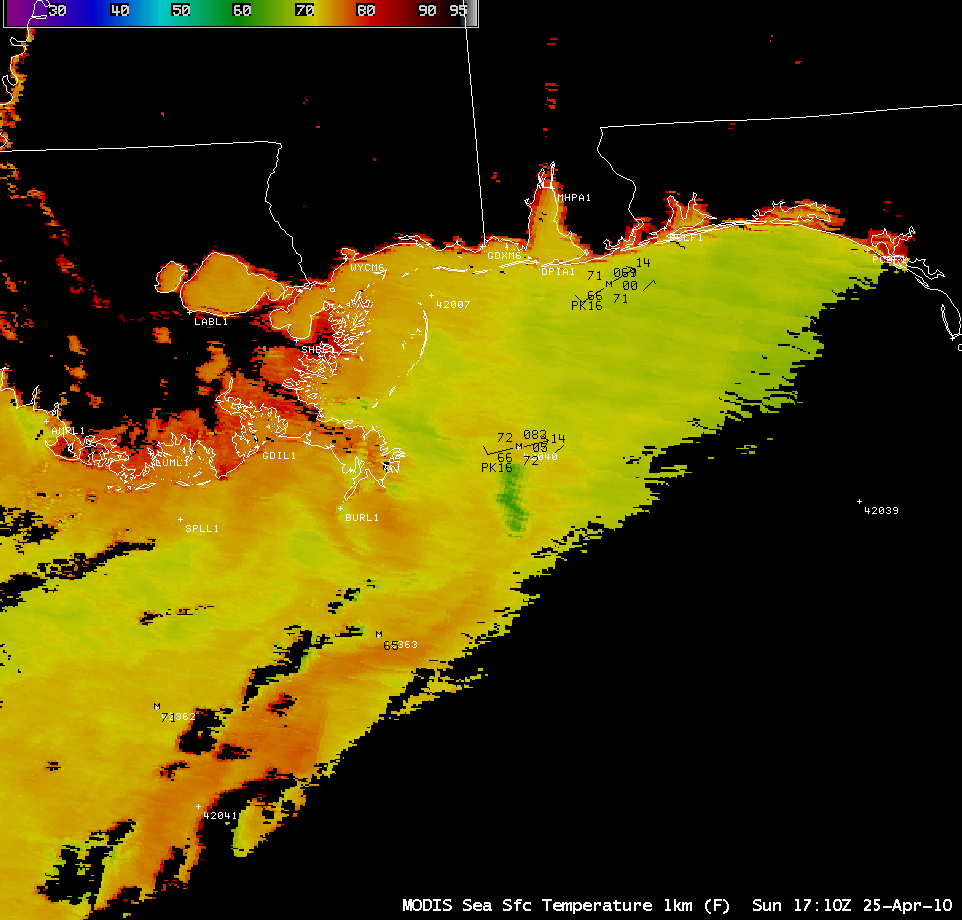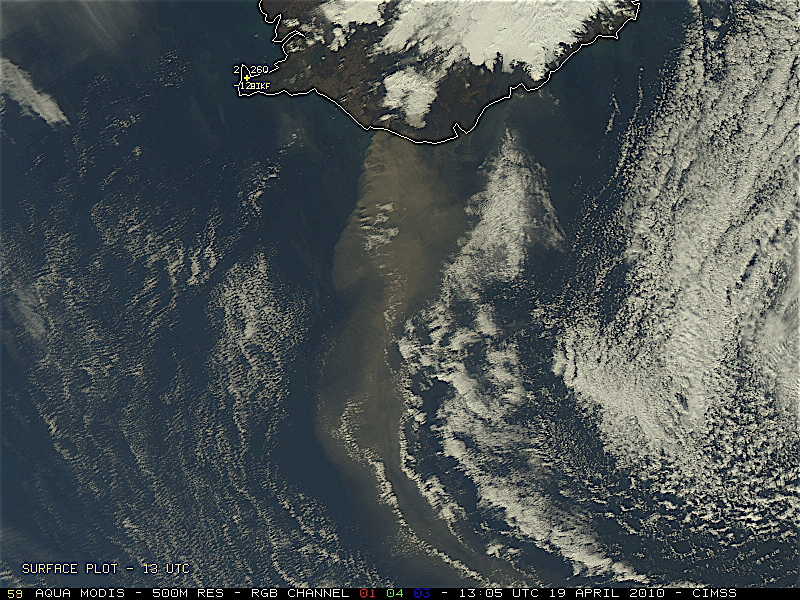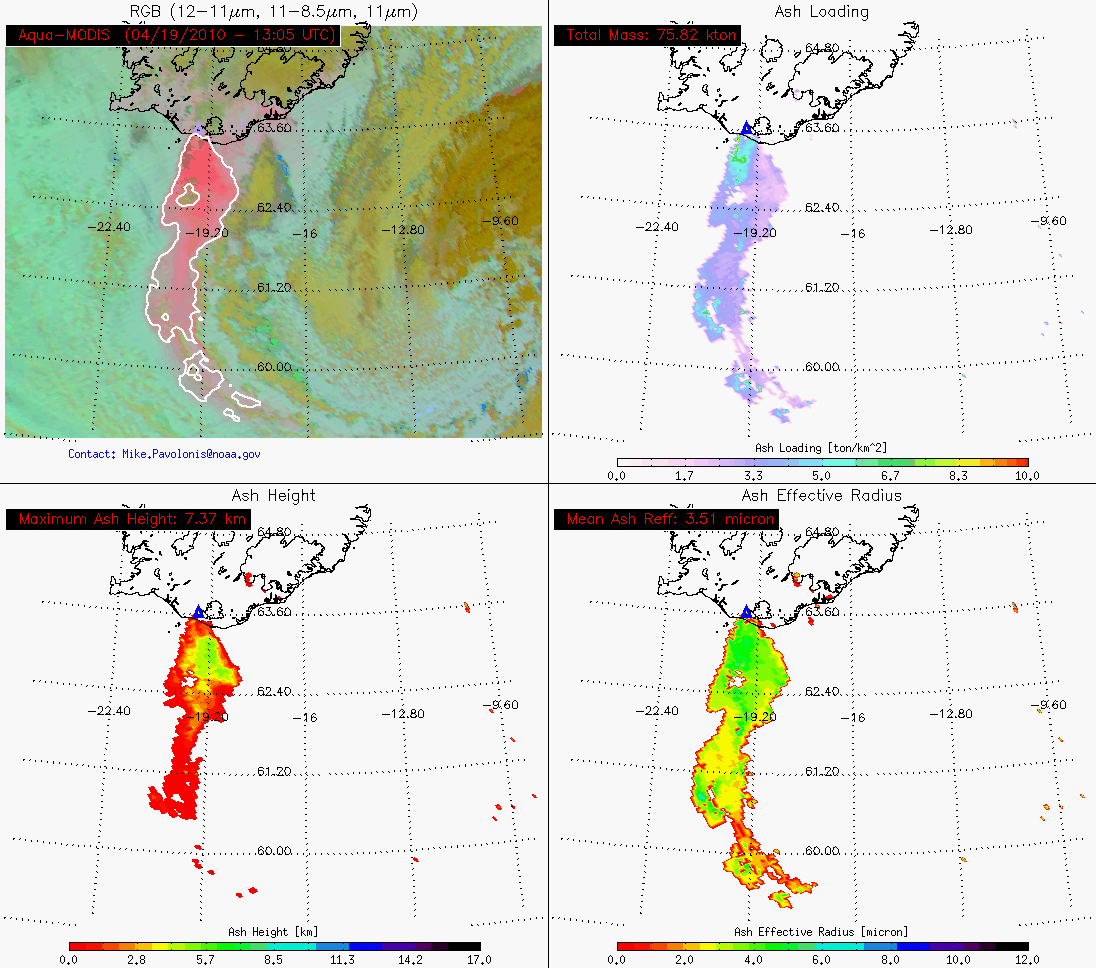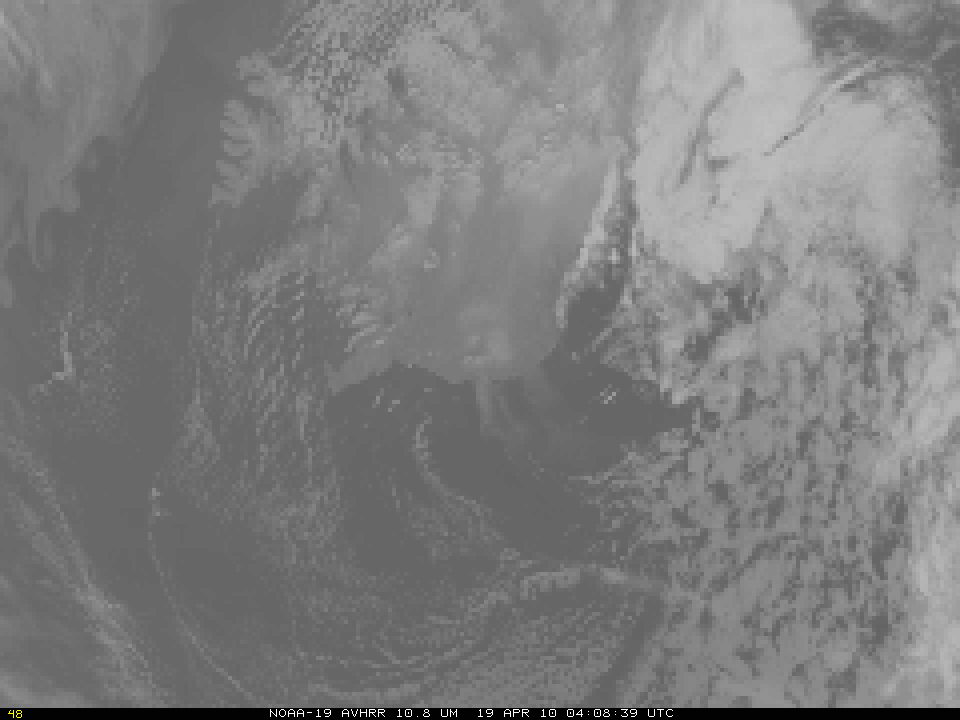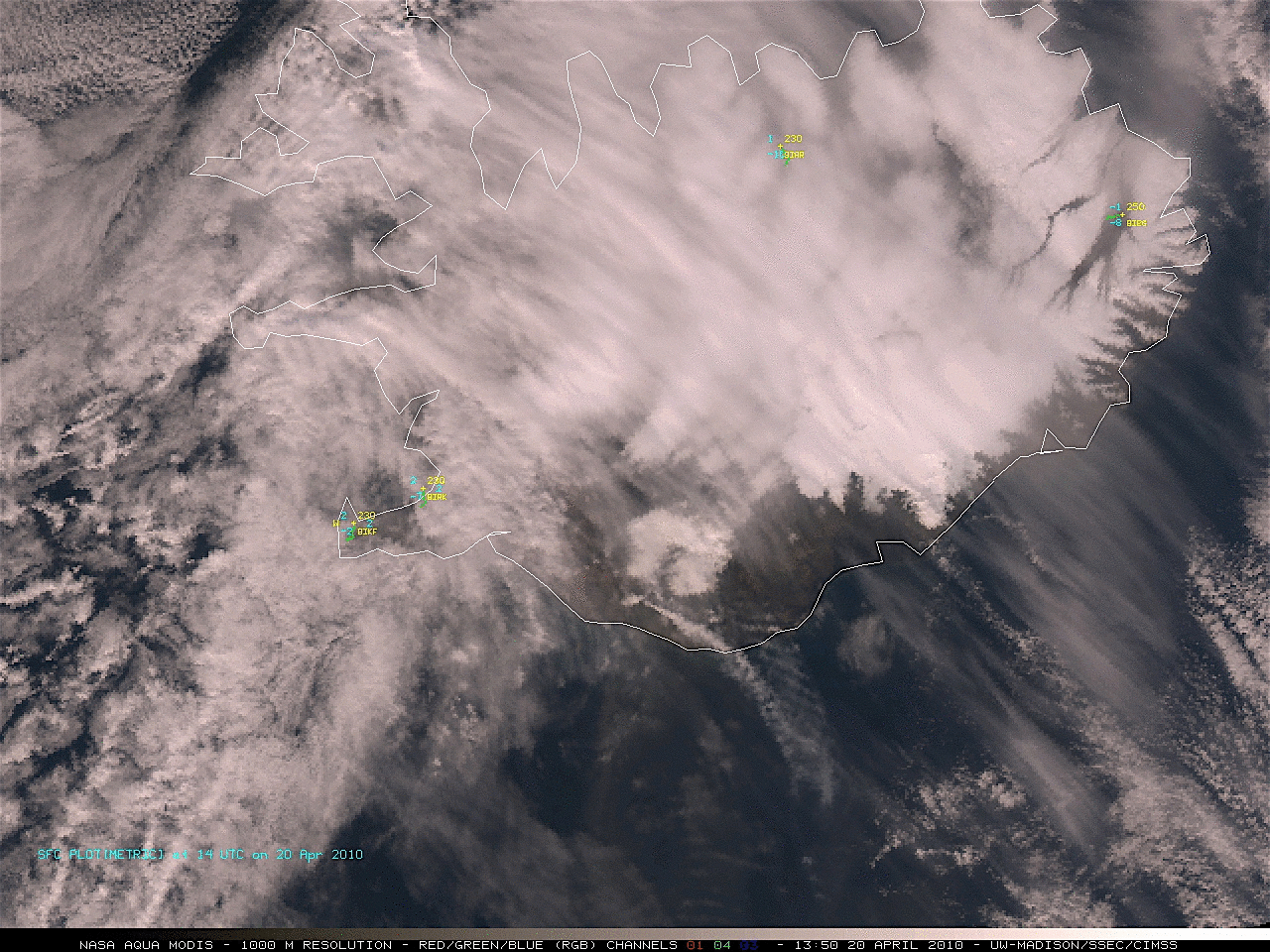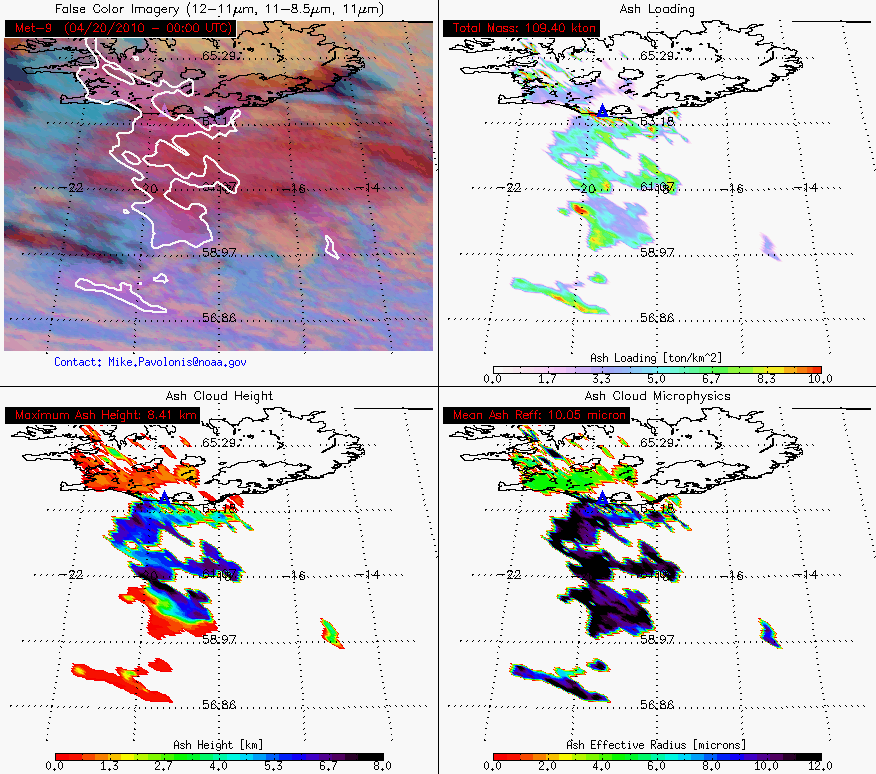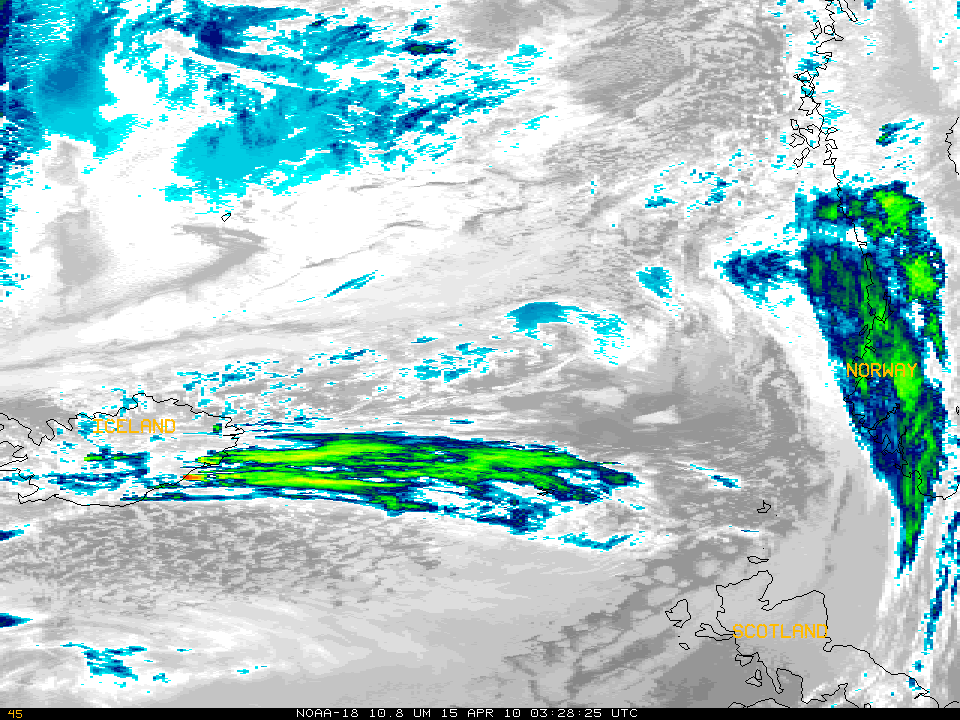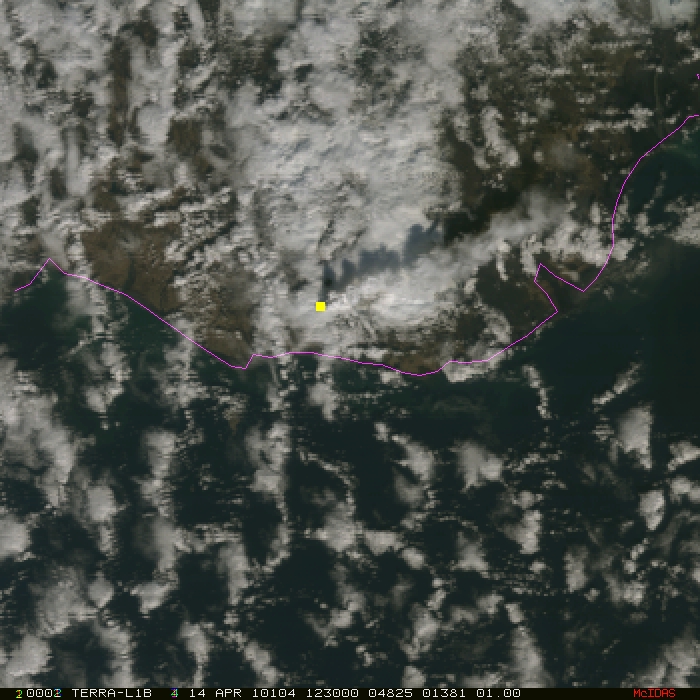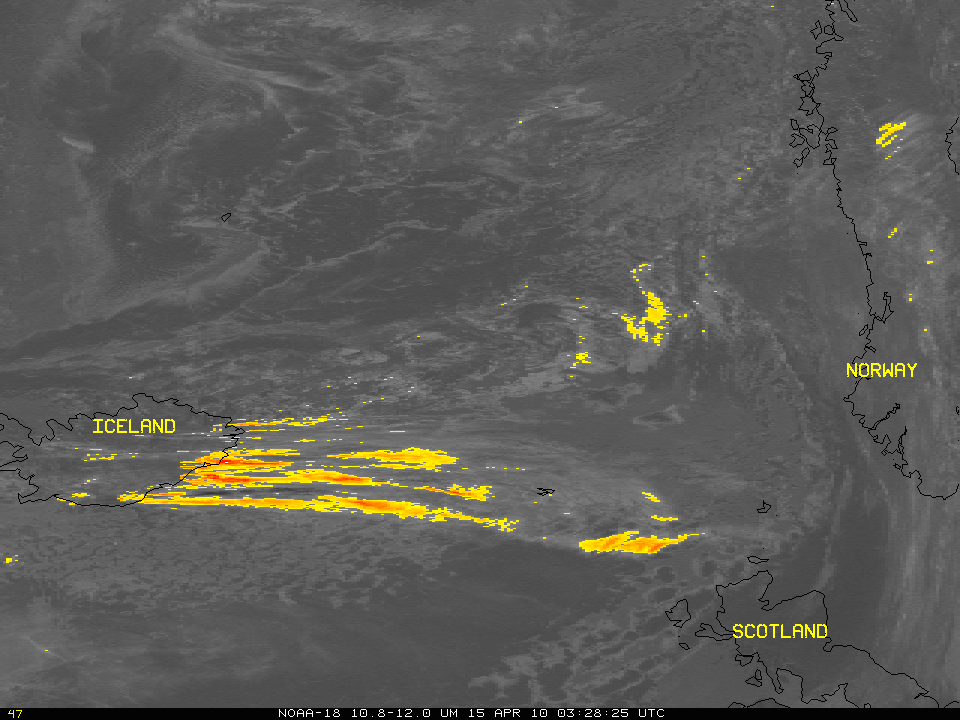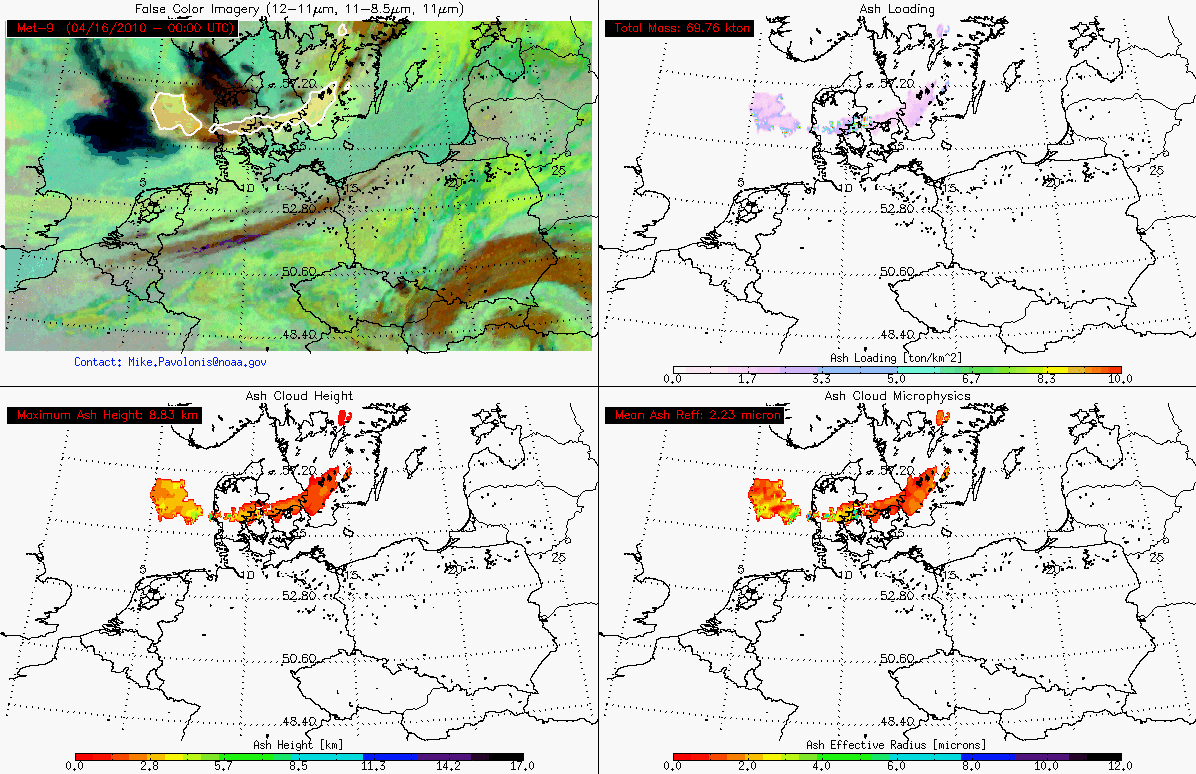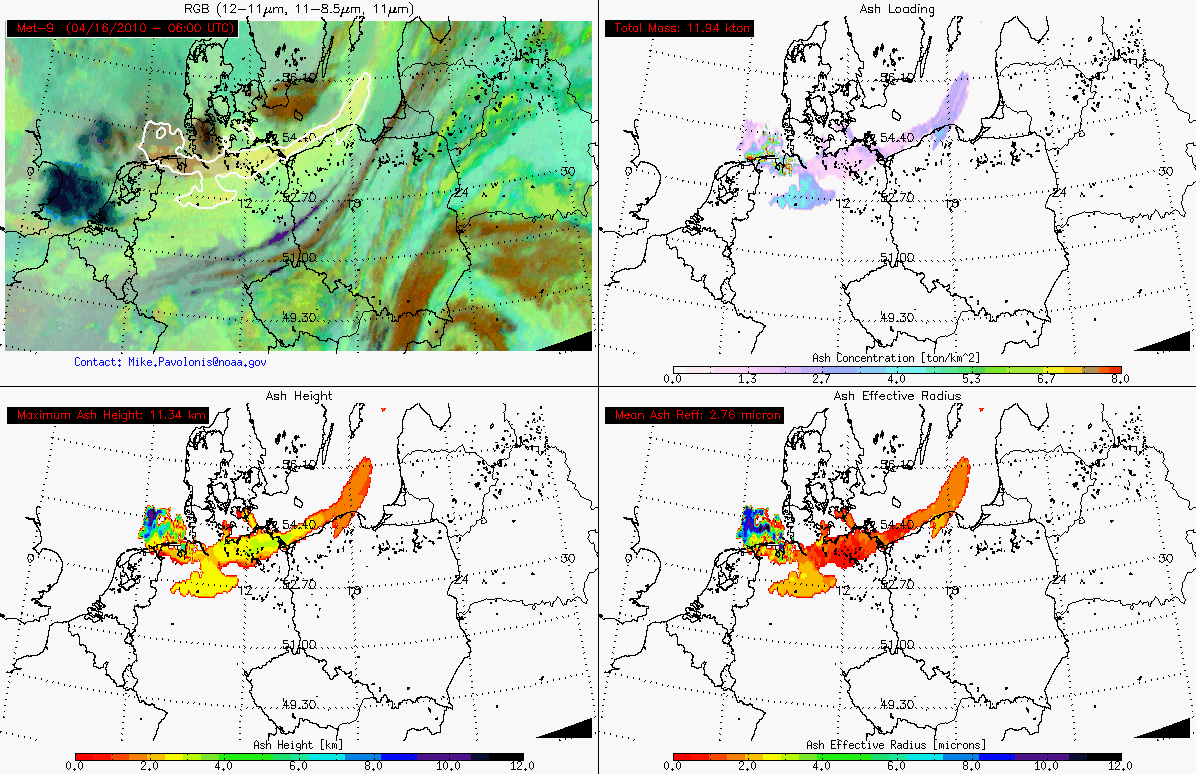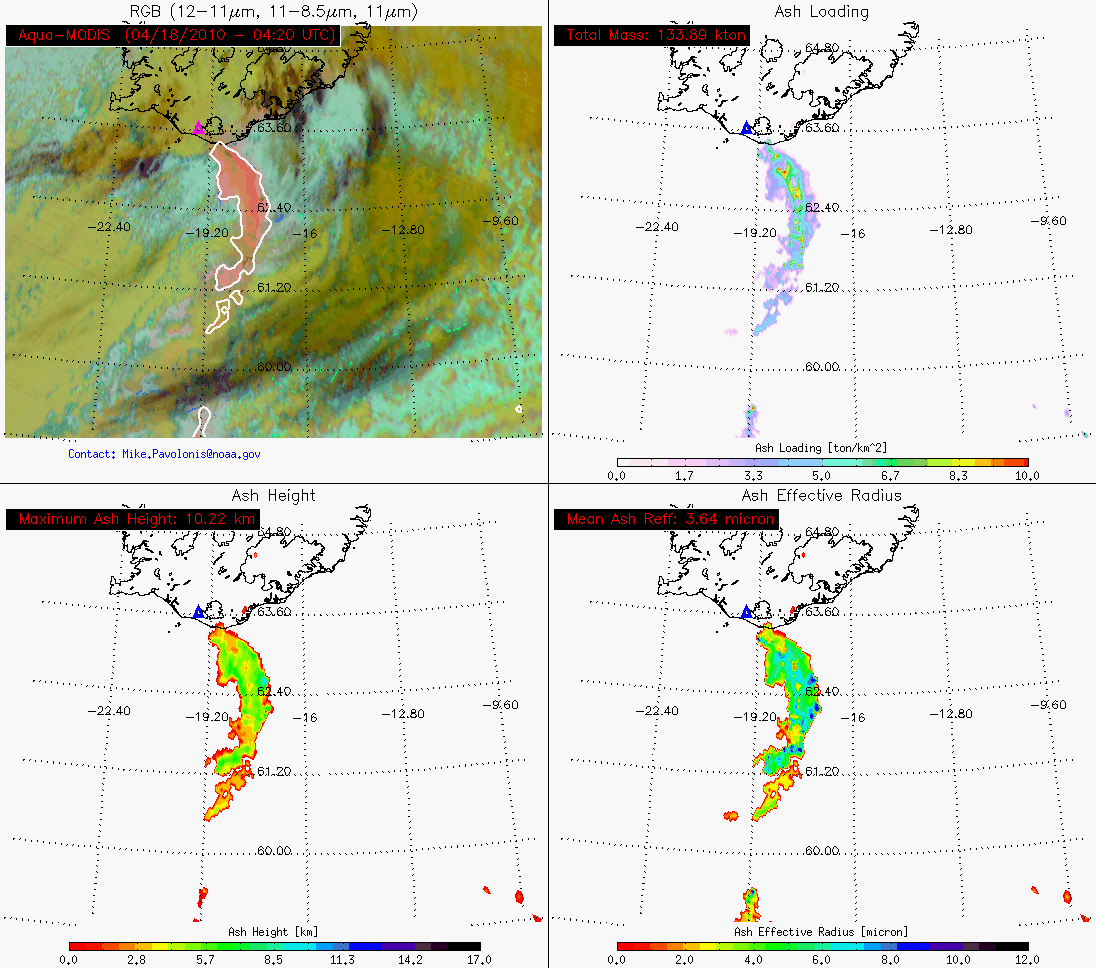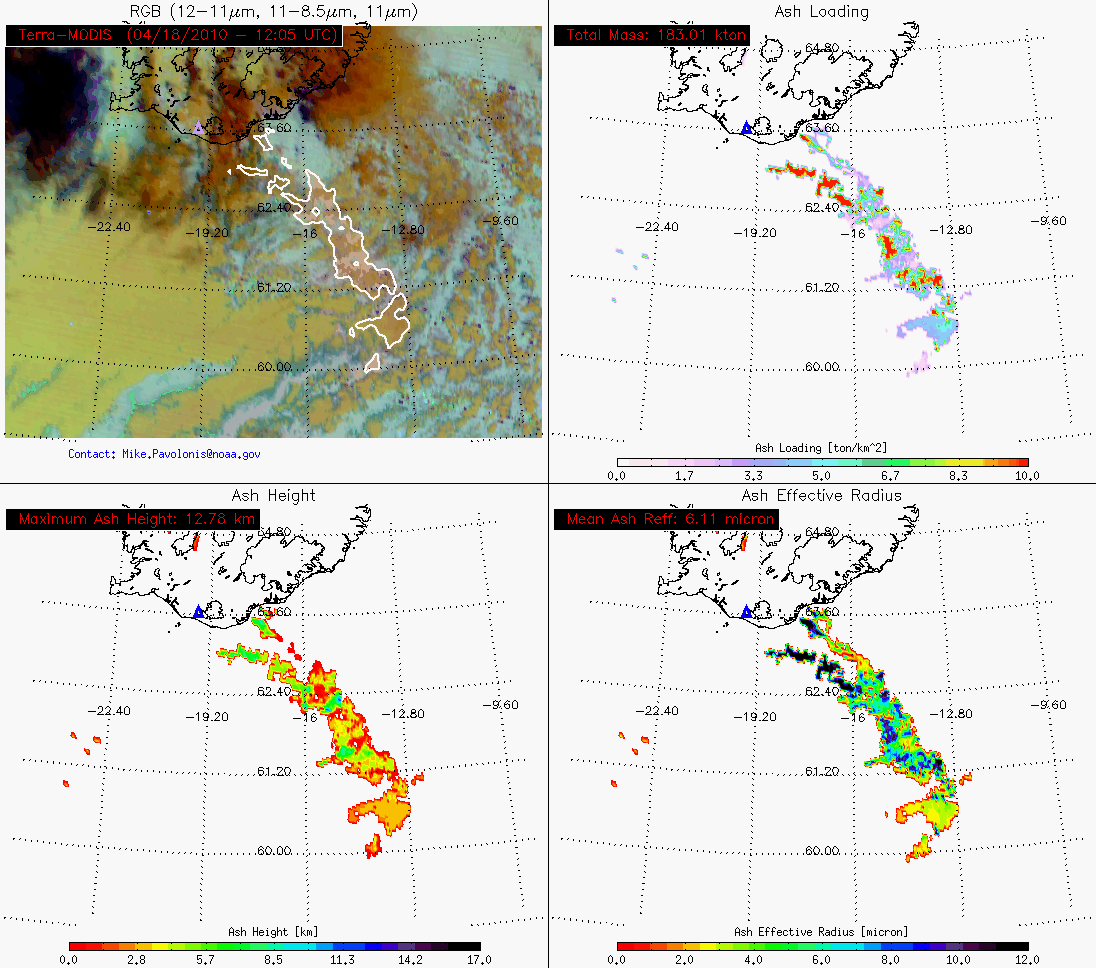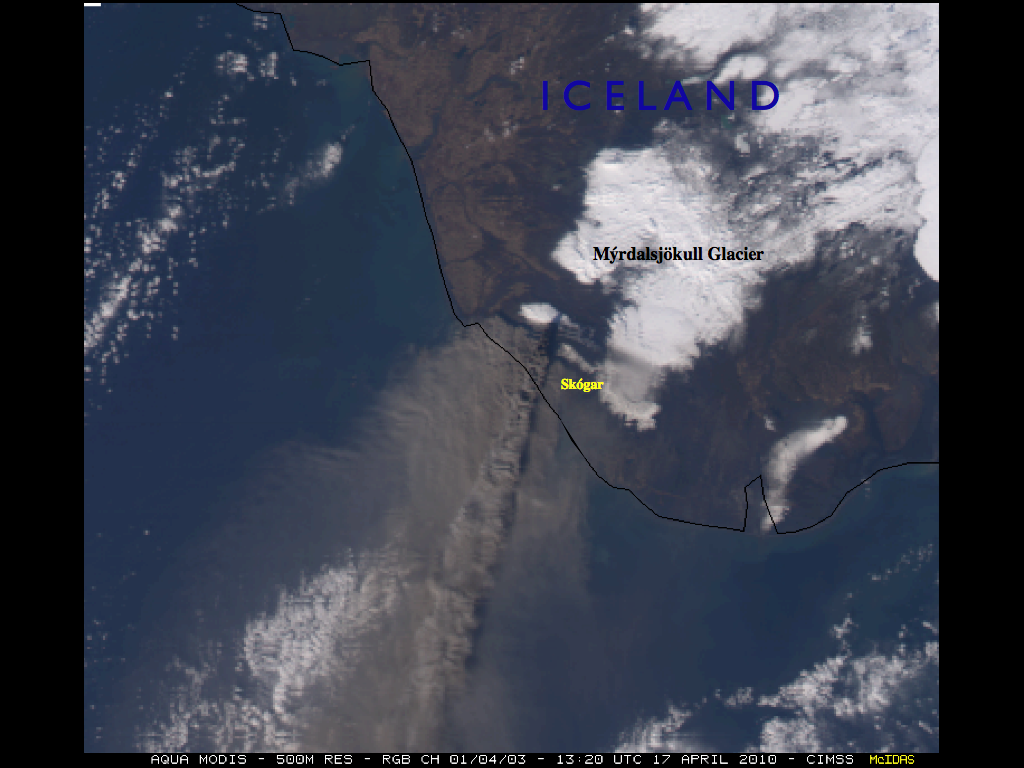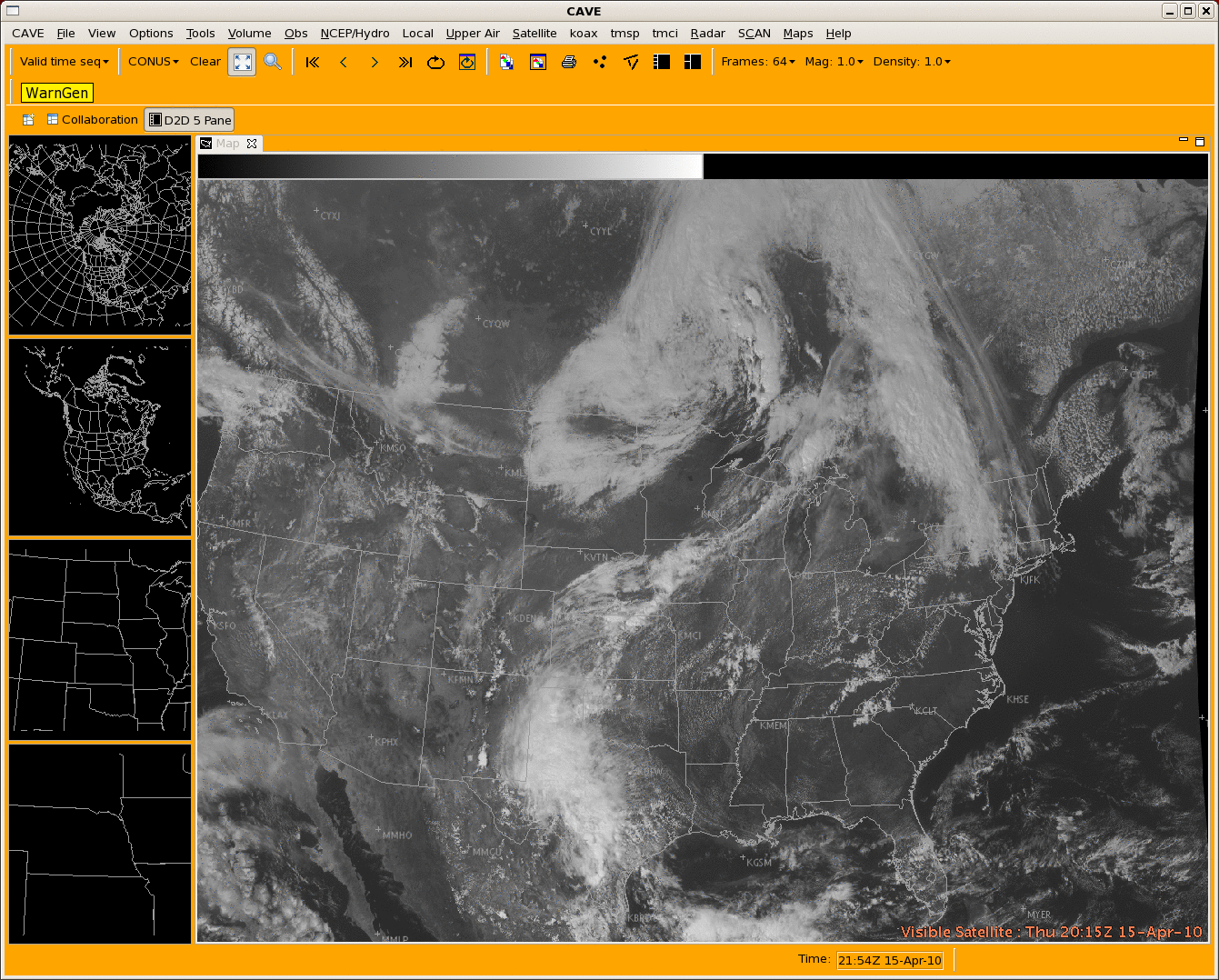A 250-meter resolution MODIS True Color Red-Green-Blue (RGB) image from the SSEC MODIS Today site (below) showed the smoke plume around 16:07 UTC.
===== 25 April Update =====
A 3-image sequence of MODIS True Color RGB images (below) showed the smoke plume drifting southeastward from the burning oil rig site on 21 April, followed by a small oil slick on 22 April (thin bright feature meandering eastward from the oil rig site), and finally a much larger oil slick on 25 April (which had grown in size and spread to the north and northeast).
However, it is important to point out that the oil slick feature was easy to detect if it was located within the sun glint portion of the MODIS image swath (where the reflection of solar energy off the thin oil surface makes it appear as a bright feature) — on 25 April, this was the case with the 18:56 UTC overpass of the Aqua satellite. However, about 95 minutes earlier, the oil slick feature was not very apparent on the 17:21 UTC overpass of the Terra satellite, since the sun glint region was located in a different portion of the image swath, such that there was no reflection of solar radiation off the oil slick region reaching the satellite at that time (below).===== 26 April Update =====
AWIPS images of the MODIS and AVHRR Sea Surface Temperature (SST) products (below) indicated the the SST values within the oil slick feature were often as much as 5º to 10º F cooler (darker green color enhancement) than the surrounding waters in the northern Gulf of Mexico. The very warm SST values (upper 70s to low 80s F, darker red colors) associated with the Gulf of Mexico Loop Current could be seen in the lower right corner of some of the images.
View only this post Read Less


